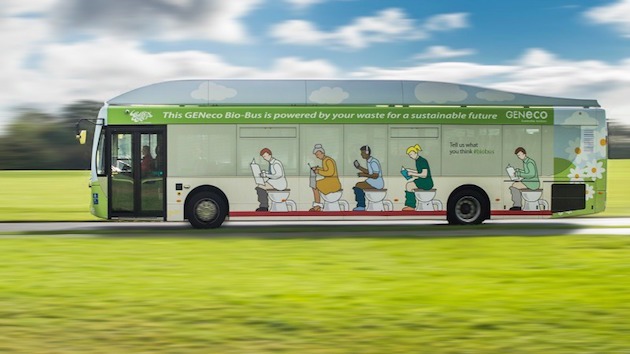Reading Time: 6 minutesThere is an underground scene of drone racers in Australia, who are meeting up in rundown warehouses in the fringe […]
There is an underground scene of drone racers in Australia, who are meeting up in rundown warehouses in the fringe suburbs of cities.
On June 6, a race was held in the old Bradmill Warehouse on the outskirts of Melbourne. The competitors — FinalGlideAus, Strepto, Daz, Covert and SD — have purpose-built quadcopters and wear specialised goggles allowing them to compete in the race from “first person view” (FPV).
Many of the drones, are “blinged” up with LED lights and accessories, making for a race of geeked-out, adrenaline-pumping goodness. And this scene is playing out across Australia.
![DSC_0232[1] drone](https://rack.1.mshcdn.com/media/ZgkyMDE1LzA2LzExLzNlL0RTQ18wMjMyMTY0LjdkZmUyLmpwZwpwCXRodW1iCTEyMDB4OTYwMD4/3bdf8fb4/5fd/DSC_02321-640x360.jpg)
IMAGE: CHRIS BALLARD
The drones zoom around the urban courses — such as go-cart tracks, farms and warehouses — at speeds of up to 60km/h, with up to 30 people attending race meets. They typically start at 10 a.m, and include five hours of practice to get used to the track and then an hour race.
As the multi-rotor racing scene begins to gain traction, the company QAROP has introduced the first legal drone racing league within Australia, organising meet-ups and race days for enthusiasts across the country.

IMAGE: PETER RITCHIE
“I have flown model planes all my life, I have my pilots licence and fly real planes,” new participant Peter Richie told Mashable Australia. “I love the concept of FPV — putting you in the pilot’s seat, without the risk of injury but all the fun.”
Racer Mark Cocquio said the invention of smaller quadcopters has made racing easier and cheaper, and that he is involved for the pure excitement.
“You have complete freedom to move in any direction. Racing is even more exciting because you have to pick your lines just right and have to react in a split second when things go wrong. One mistake and the tiny gap you’re aiming for becomes a wall or a tree and you’re down and out,” he wrote in an email.

IMAGE: PETER RITCHIE
Director of QAROP Chris Ballard said although the industry is to starting pick up, with groups hosting events more regularly, one thing that is hindering the location and amount of flyers are the outdated aviation laws. The Australian Civil Aviation Safety Authority (CASA) regulations haven’t been updated in almost two decades and were originally created for the model plane industry, he said.
The restrictions include allowing model aircraft only to fly in “line of sight,” meaning FPV drones are out as you are viewing the drone through goggles. It also restricts outdoor flying unless it is within a model flying club, and puts limits on the amount of useable frequencies for flying.
“One thing that is holding us back at this stage is the technology, and laws,” Ballard toldMashable Australia. “The technology allows for eight people to be in the air at the one time racing against each other, however the Australian laws limit frequencies we can use only really allowing four people to be in the air at once.”
He said drone racing in New Zealand, where his company also runs a league, is easier to implement due to softer laws.
“New Zealand has laws that are much more open, much more advanced. In terms of Australia, they are a little bit draconian simply because the rules were written in 1997, and what we do didn’t happen until two or three years ago. It is hard to relate these laws to what we do on a day-to-day basis.”
CASA has flagged commercial drone laws will be reviewed in the near future, to keep up with the influx of drones in the Australian skies, and it will look at recreational drone regulations as a small part of that review.
Currently, the rules prevent users flying drones higher than 400 feet, over crowded areas, within 30 metres of people and at night.
CASA spokesperson Peter Gibson told Mashable Australia that although drone racing takes place indoors, some of the rules are “totally applicable” such as keeping drones 30 metres away from people and property. “Despite the fact some of the rules don’t apply indoors, the overarching one of safety does. They have to make sure they are not causing any risk to anyone or anything.”
“Anyone who wants to undertake drone racing, they have an obligation to not cause a risk. There’s a set of rules, make sure you follow those rules,” Gibson said. “If you want to organise drone racing, seek our advice on how you might approach it. Our broader message is: please contact us first.”
Despite the hurdles, Ballard has managed to get the league off the ground.
“Where there is a will, there’s a way,” he said. “It would be nice to do what we like, but we understand there are safety issues involved particularly with people who don’t understand the given situation. We stick to them, we advise our members to stick to them and we work our way around it.”
It isn’t a cheap sport to be involved in due to the fact there are no off-the-shelf drone varieties suited to performance-based racing. “We are at that stage in the industry, anything that is performance based has to be made by hand,” Ballard explained.

IMAGE: CHRIS BALLARD
The entry point for a drone to get you off the ground is a couple of hundred dollars, but that is not going to let you compete in the big stakes.
“It depends on your budget, there is something for everyone,” Ballard said. “You could get away with flying a race for $300. On the other end of things, people that get serious can spend anywhere upwards of $2,000 on a single drone. Typically speaking, anyone who is serious will have at least three ready at any given time in case the other two fail.”
Cocquio agreed: “These days the startup cost is roughly $1,000-2,000 all up, but that includes one-off items like your radio, goggles and battery charger. The danger is that once you have one racer, it becomes much cheaper to buy more! Then suddenly you have a full stable of the things and have spent, who knows, how many thousand bucks.”

IMAGE: CHRIS BALLARD
The races attract all kinds of people. In Ballard’s local flying group there are farmers, commercially-licensed drone operators, students, professionals, 12-year-old kids and IT guys. It isn’t who you are, but more about how quickly you can learn.
“It requires a lot of patience, it is a big and constant learning curve. You have to learn everything from soldering, to basic computer programming, aerodynamics, the way piloting works, video transmission. There is a large array of very diverse subjects that you have to get a basic understanding of to make work what you are trying to make work.”


